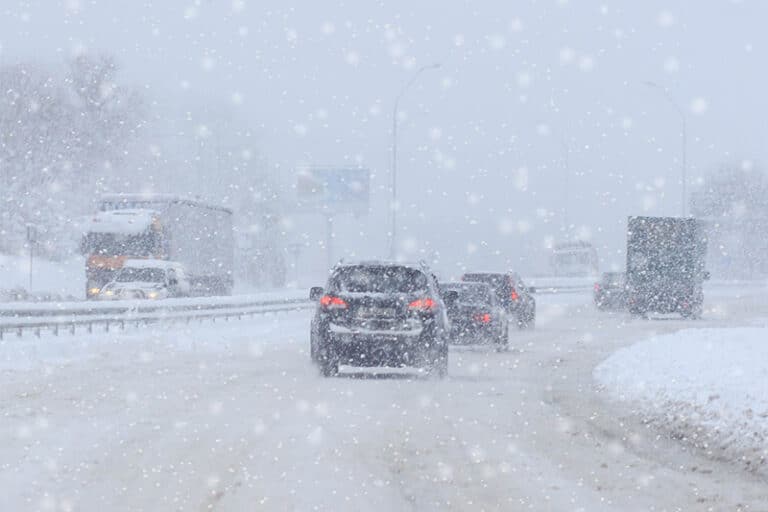With the onset of fall typically comes an increased number of rainy weather days. You might think to yourself, “It’s just a little rain,” but in fact, wet-weather driving poses a unique set of challenges and risks. The U.S. Department of Transportation says wet roadways account for 75 percent of weather-related crashes each year, with thousands killed and more than half a million injured in those crashes. Suffice it to say drivers should be extra vigilant and prepared when driving in wet weather.
Risks of Wet-Weather Driving
Wet weather can seriously affect visibility and vehicle performance, making driving a more complex task than usual. Slippery roads can lead to hydroplaning, where the tires lose contact with the road surface and the vehicle skids uncontrollably. Moreover, heavy rain can cause flooding, adding another layer of difficulty to driving. Common causes of wet-weather accidents include speeding, tailgating, and not using headlights.
Tips for Safe Wet-Weather Driving
Most wet-weather accidents are preventable with responsible driving habits. Some tips to keep in mind:
- Slow down when roads are wet to avoid hydroplaning. Make sure your tires are properly inflated and have enough tread depth. If you find your vehicle hydroplaning, do not panic—ease off the accelerator and steer in the direction you want to go until you regain control.
- Keep your headlights on in rainy conditions. Keeping your headlights on, even in daylight, makes it easier for other drivers to see you.
- Avoid flooded roads. If you encounter a flooded area, it’s best to take an alternate route. It takes just 12 inches of water to carry away a small car and only 6 inches to cause most cars to stall.
- Maintain a greater distance from other vehicles. This gives you more time to react to sudden stops or changes in traffic. Remember, the stopping distance on a wet road is roughly twice that of a dry road.
- Allow more travel time. Slowing down reduces the risk of hydroplaning and improves your vehicle’s ability to brake and turn. You may also need to take alternate routes. Give yourself more time to get where you’re going.
Preparing Your Vehicle for Wet Conditions
Regular vehicle maintenance is critical to safe wet-weather driving. Check your tire pressure and tread regularly–under-inflated or worn-out tires increase the risk of hydroplaning. Ensure your brakes are in good working condition, as wet weather can affect their performance. Periodically inspect your windshield wipers for wear and tear, replacing them if necessary so you can see the road ahead.
You can control your sense of safety in wet weather, but you can’t control the actions of others. If you or someone you love is injured in an accident due to someone else’s negligence on wet roads, a skilled personal injury attorney can help you receive proper compensation to cover your injuries and other losses. Contact our offices to schedule a consultation.








